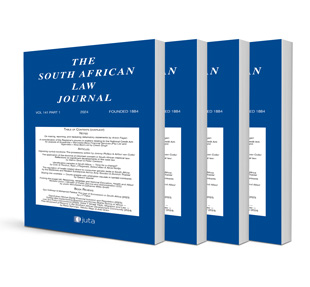Disproportionality – the hidden ground of review : Medirite (Pty) Ltd v South African Pharmacy Council & another

Disproportionality – the hidden ground of review: Medirite (Pty) Ltd v South African Pharmacy Council & another
Author Clive Plasket
ISSN: 0258-2503
Affiliations: 1 High Court of South Africa
Source: South African Law Journal, Volume 136 Number 1, Mar 2019, p. 15 – 26
Accreditation: Department of Higher Education and Training (DHET)
The International Bibliography of Social Sciences (IBSS)
Abstract
The public-law concept of proportionality is defined by Cora Hoexter Administrative Law in South Africa 2 ed (2012) 344 as follows:
‘Proportionality may be defined as the notion that one ought not to use a sledgehammer to crack a nut. Its purpose is ‘‘to avoid an imbalance between the adverse and beneficial effects . . . of an action and to encourage the administrator to consider both the need for the action and the possible use of less drastic or oppressive means to accomplish the desired end’’. Two of its essential elements, then, are balance and necessity, while a third is suitability— usually referring to the use of lawful and appropriate means to accomplish the administrator’s objective.’
Jeffrey Jowell &Anthony Lester, in their influential essay ‘Proportionality: Neither novel nor dangerous’ (in Jeffrey L Jowell & Dawn Oliver (eds) New Directions in Judicial Review (1988) 51–2 and 59–60), made the point that disproportionality as a ground of review of administrative action is often hidden but nonetheless present in a number of judicial review cases. The concept of proportionality is central to the legal system generally and, even when it is not identified by name, it sometimes explains the basis for judicial review. Paul Craig (Administrative Law 6 ed (2008) para 19-010) supports this view, stating that it has been recognised in English law that ‘there are purely domestic cases where the courts have either explicitly applied proportionality or have reasoned in a manner analogous thereto’.